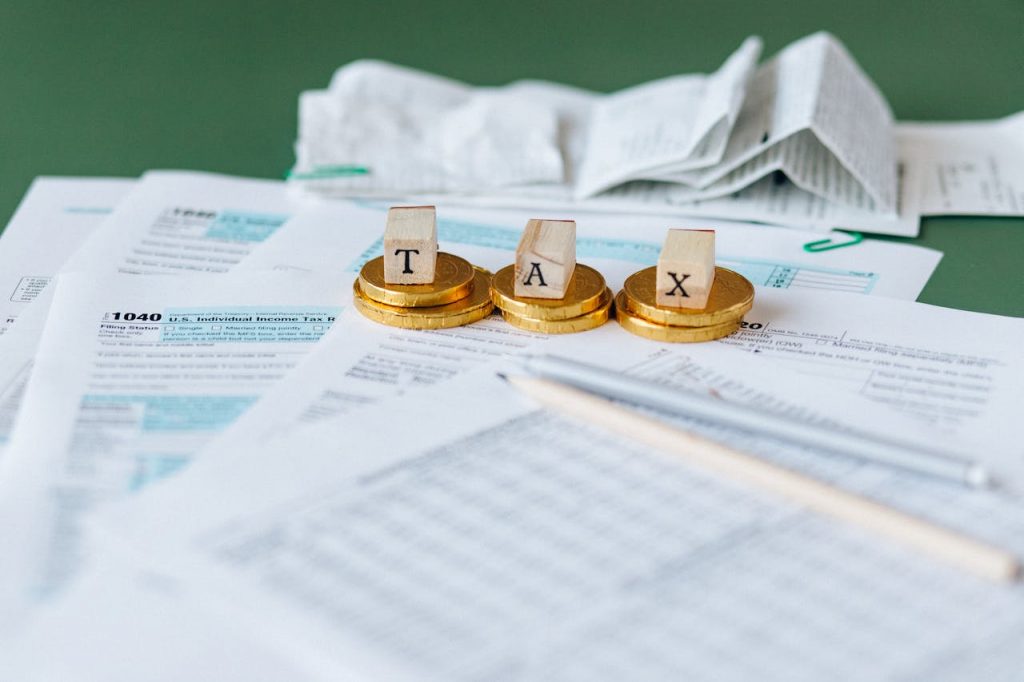ITR Filing for FY 2024-25 comes with major updates- including an extended deadline and new rules. The Central Board of Direct Taxes (CBDT) has shifted the due date from July 31, 2025, to September 15, 2025. Whether you are salaried, self-employed, or a small business owner, staying updated on these changes is crucial. This quick guide explains everything from what is new, who should file, how to file, and how to avoid penalties.
The Reasons Behind the Extended ITR Deadline
The government extended the ITR filing deadline because of several major changes that taxpayers need time to understand and follow properly. Here is what changed:
1) ITR Form Updates: The Income Tax Return forms have been revised. Many sections now require additional details. Because of this, individuals and businesses need more time to adapt.
2) Form 16 Changes: Employers have to issue updated Form 16 formats. This may take longer than usual. Since many salaried taxpayers rely on Form 16 to file ITR, this delay directly affects them.
3) Change in Capital Gains Rule: Starting July 23, 2024, new rules for taxing capital gains came into effect. So, taxpayers with income from stocks, mutual funds, or property need to recalculate their taxes accordingly.
4) Stricter Disclosure Requirements: Taxpayers must now provide more detailed information about deductions and investments. This includes policy numbers, loan details, and medical insurance records.
5) New Tax Regime Benefit: A new ₹75,000 standard deduction has been introduced for salaried individuals under the default New Tax Regime. This requires careful consideration during filing.
Who Should File Income Tax Returns (ITR)?
You should file your ITR even if your income is below the taxable limit. Here is why it is important:
- To claim TDS refunds: If your bank or employer deducted tax on fixed deposits, savings interest, or dividends, you can get that money back by filing your ITR.
- To apply for loans: Most banks ask for ITR documents when you apply for a home loan, car loan, or even a personal loan. It shows that you have a regular income.
- For visa purposes: When applying for visas especially for countries like the US, UK, or Canada, you may need to submit ITR as proof of your financial stability.
- For passport applications: In some cases, especially for frequent travelers or businesspersons, passport offices may ask for ITR copies.
- To carry forward losses: If you made losses from shares, mutual funds, or property sales, filing your ITR lets you carry those losses forward for up to 8 years. You can then adjust them against future profits.
- To record business losses: Business owners can carry forward losses only if they file ITR on time.

Understanding Income Limits
Before you file your income tax return, you need to know two things: your income threshold and the correct ITR form to use.
Income Thresholds
- Under the new tax regime, you don’t have to pay any tax if your total income is up to ₹7 lakh. This includes the new ₹75,000 standard deduction for salaried individuals.
- Under the old tax regime, income up to ₹2.5 lakh is tax-free. However, this regime allows you to claim various deductions like 80C (investments), 80D (medical insurance), and more.
How to Choose the Right ITR Form?
If you are a salaried person or a pensioner, you will most likely use ITR-1 (Sahaj) – but only if you meet these conditions:
ITR-1 (Sahaj) – for Salaried Individuals with Simple income
You are eligible for ITR-1 if you have:
- Income from salary or pension
- Income from one house property (even if it’s rented)
- Other income sources like savings interest, FD interest, or dividends
- Agricultural income up to ₹5,000
- Long-term capital gains up to ₹1.25 lakh
You are not eligible for ITR-1 if you:
- Are you a director in a company
- Hold unlisted shares in a private company
- Own foreign income or foreign assets
- Earn more than ₹50 lakh in total income
- Have more than one house property
- Need to carry forward any losses to future years
If any of the “Not eligible” points apply to you, you will need to look at other ITR forms like ITR-2 or ITR-3 instead.
Not everyone fits into the ITR-1 category. Based on your income type and financial profile, you may need to file a different form. Let’s look at when to use ITR-2, ITR-3, and ITR-4.
ITR-2 – For Individuals with Capital Gains or High Income
Use ITR-2 if you:
- Have capital gains over ₹1.25 lakh (e.g., from selling stocks, mutual funds, or property)
- Own multiple house properties, especially if you earn rent from them
- Earn more than ₹50 lakh in a financial year
- Have foreign income or assets, like overseas bank accounts or shares
- This form is ideal for salaried individuals or pensioners who also have these additional income sources.
ITR-3 – For Business or Professional Income
You must file ITR-3 if:
- You run a business (like a shop, firm, or startup)
- You are a freelancer or a professional (such as a doctor, lawyer, consultant) earning income through your own practice
- This form suits those with income from business or self-employment.
ITR-4 (Sugam) – For Presumptive Income
Choose ITR-4 if:
- You have a small business or are a freelancer
- Your total income is below ₹50 lakh
- You opt for presumptive taxation under Sections 44AD, 44ADA, or 44AE (where income is presumed based on a fixed percentage of turnover, reducing paperwork)
- This is a simplified return form for small taxpayers who want to avoid detailed bookkeeping.
Key Documents You Need Before Filing ITR
Before you sit down to file your income tax return, make sure you have gathered all the essential paperwork. These documents help you fill in accurate details and avoid mistakes.
Essential Documents
- Form 16: Your employer gives you this document. It includes your salary details and TDS (Tax Deducted at Source).
- Form 26AS: You can download this from the Income Tax website. It shows all the TDS collected from your income by different entities like banks or companies.
- AIS (Annual Information Statement): This is available on the Income Tax Portal. This report gives a complete view of your income, including interest, dividends, and other sources.
- Bank Statements: These help you report undeclared income, especially if you earned money from house property or side income.
- Investment Proofs: If you are claiming deductions under sections like 80C, 80D, or 24B, keep all the relevant receipts or policy documents ready (e.g., LIC premiums, ELSS investments, PPF deposits, etc.).
New Documentation Rules You Should Know
Along with the usual documents, the Income Tax Department now asks for some additional details. Make sure you don’t miss these while filing your return:
- Policy Numbers for 80C Claims: If you are claiming deductions under Section 80C (like PPF, LIC, or ELSS), you must mention the policy number or account number for each investment.
- Loan Information for Section 24B: For home loan interest deductions, you now need to provide the full details of the lender, including bank name, loan account number, and interest certificate.
- Medical Insurance Details for 80D: When claiming medical insurance deductions, include policy number, insurer’s name, premium amount, and payment date.

New Tax Regime vs Old Tax Regime
When filing your ITR, one of the most important steps is deciding between the new and old tax regimes. Each offers different benefits and conditions, so choose based on your income type and savings habits.
New Tax Regime
The new regime is now the default option unless you choose otherwise. It offers lower tax rates and simpler filing, but limits deductions.
Key Benefits:
- Lower slab rates across income groups
- ₹75,000 standard deduction for salaried taxpayers (newly introduced)
- No need to keep receipts for most investments
- ₹25,000 rebate under Section 87A for income up to ₹7 lakh (making it effectively tax-free)
Limitations:
- No deductions are allowed under most sections, like 80C, 80D, or 24B
- Not suitable if you have many investments or a home loan interest to claim
Old Tax Regime
The old regime allows you to claim multiple deductions, but comes with higher tax rates and more paperwork.
Key Benefits:
- Claim deductions under Section 80C (up to ₹1.5 lakh), 80D (medical), 24B (home loan), and more
- Suitable if you have insurance, housing loan, ELSS, tuition fees, or HRA to claim
- ₹12,500 rebate under Section 87A (for income up to ₹5 lakh)
Limitations:
- Higher tax slabs
- Requires you to maintain all proof of investments and expenses
Step-by-Step Guide to ITR Filing for FY 2024–25
Filing your income tax return may sound complex, but breaking it down into small steps makes it easy. Here’s how to do it the right way:
Step 1: Choose the Right Tax Regime
Start by selecting whether to file under the New Tax Regime or the Old Tax Regime.
- If you are using ITR-1 or ITR-2: You can switch between the two regimes while filing your return.
- If you are filing ITR-3 or ITR-4: You must submit Form 10-IEA on or before September 15, 2025, if you want to switch from the new to the old regime.
Step 2: Gather All Required Information
Before logging in, make sure you have these documents ready:
- Form 26AS: Download from incometax.gov.in to check TDS and income details.
- AIS (Annual Information Statement): A complete record of your income and financial transactions.
- Form 16: Issued by your employer (for salaried individuals).
- Investment and Expense Proofs: Especially if you are opting for the old regime.
Step 3: Log in to the Income Tax Portal
- Visit the official portal: incometax.gov.in
- If you are a first-time user, register using your PAN.
- Log in with your user ID, password, and captcha.
Step 4: Select ITR Form and Assessment Year
- Choose Assessment Year 2025–26
- Select the appropriate ITR form based on your income type
- Choose the online filing option for faster processing
Step 5: Fill in Personal Details
- Confirm your name, address, PAN, and Aadhaar details
- Update your bank account for refunds
- Select your employment type (e.g., salaried, freelancer, business owner)
Step 6: Declare Your Income
- Salary Income: Auto-filled using Form 16
- House Property: Add rental or notional income
- Other Sources: Include interest from FDs, savings accounts, dividends
- Capital Gains: Enter if you sold stocks, property, or mutual funds
Step 7: Claim Deductions (Only in Old Regime)
If you are using the old tax regime, enter eligible deductions:
- Section 80C: PPF, ELSS, LIC, tuition fees (up to ₹1.5 lakh)
- Section 80D: Health insurance premiums
- Section 24B: Interest on home loans
- Any other deductions that apply to you
Step 8: Calculate Tax and Make Payment
- Let the portal calculate your tax automatically
- If you owe tax, pay it online before submission
- If you are eligible for a refund, ensure bank details are correct
Step 9: Verify Your Return
After submission, e-verify your return to complete the process.
Options to verify:
- Aadhaar OTP (quick and easy)
- Net banking login
- Bank account EVC
Done. Once verified, your ITR is officially filed. You will receive an acknowledgement (ITR-V). Save it for future reference.
How to Pay Self-Assessment Tax
If your tax calculation shows any amount payable, you must clear it before submitting your Income Tax Return (ITR). Follow these simple steps:
- Step 1- Log in to the Income Tax e-Filing Portal.
- Step 2- Click on e-File in the top menu.
- Step 3- Navigate to “Income Tax” then to “Pay Tax”.
- Step 4- Select “New Payment” from the available options.
- Step 5- Choose the correct Assessment Year – 2025–26.
- Step 6- Under “Type of Payment”, select “Self-Assessment Tax”.
- Step 7- Enter the exact tax amount due, as calculated.
- Step 8- Complete the payment using your preferred method – Net Banking, Debit Card, UPI, or other options available.
Once payment is successful, the portal will generate a Challan. Keep a copy for your records and proceed to file your ITR.

Important Deadlines and Penalties
Staying aware of key dates can help you avoid unnecessary penalties:
Key Dates
- ITR Filing Deadline: September 15, 2025. (This is an extended deadline from the original July 31, 2025.)
- Tax Payment Deadline: You should complete payment before filing your return. This helps you avoid interest charges.
Late Filing Penalties
If you miss the deadline:
- You will be charged interest under Section 234A for late filing.
- A late filing fee under Section 234F will also apply, depending on your income level.
- Additionally, interest on any unpaid tax will be calculated and added to your final dues.
- Even if you are not required to pay tax, filing on time helps you stay compliant and avoid penalties.
Tips for ITR Filing for FY 2024-25
To make your income tax return process hassle-free, follow these practical steps at every stage:
Before Filing
- Use the Income Tax Calculator on the official portal to compare the old vs new tax regimes and choose the one that benefits you the most.
- Keep all investment proofs and deduction-related documents ready.
- Verify that your AIS (Annual Information Statement) matches the details in your Form 26AS.
- Check for any TDS mismatches and get them corrected, if necessary.
During Filing
- Double-check every entry for accuracy before submitting.
- Save your draft frequently to avoid data loss.
- Keep all supporting documents close by for quick reference.
- Confirm that your bank details are correct to ensure smooth refund processing.
After Filing
- Download and save your ITR-V acknowledgment for future reference.
- Keep a copy of the ITR acknowledgment and related documents for records.
- Use the portal to track your refund status, if applicable.
Mistakes to Avoid While Filing ITR
Even a small error in your ITR can lead to delays, rejections, or notices from the Income Tax Department. Avoid these common mistakes:
1) Choosing the Wrong ITR Form
Many taxpayers select the incorrect form. Always double-check the eligibility criteria before you begin filing. Using the wrong form can invalidate your return.
2) Income Mismatch
Make sure that all your income sources like salary, interest, dividends, or capital gains, are reported. Mismatches between your declared income and what is in Form 26AS or AIS can trigger scrutiny.
3) Missing TDS Details
Sometimes, TDS deducted by banks or employers doesn’t reflect in your return. So, cross-verify all TDS entries using Form 26AS and AIS before submission.
4) Incorrect Deduction Claims
Claiming deductions without valid proof can lead to disallowances. Ensure you have all investment receipts, insurance details, or loan documents ready and accurate.
5) Bank Details Error
Entering incorrect bank account details may delay or block your refund. Always verify your account number and IFSC code before final submission.
Reviewing your entire ITR thoroughly before submission can save you from unnecessary follow-ups and penalties.
Final Thoughts: Be Smart, Stay Informed, and File On Time
With new rules and more time to file, ITR filing for FY 2024-25 is easier to manage – if you plan well. Use this guide to avoid errors, choose the right regime, and complete your return on time.









